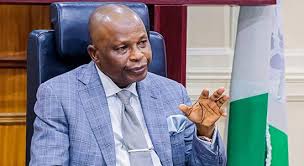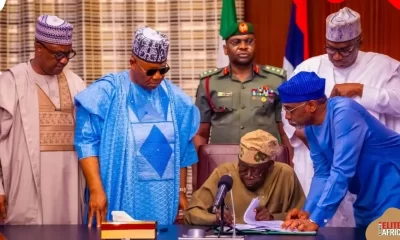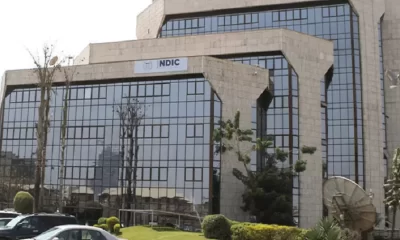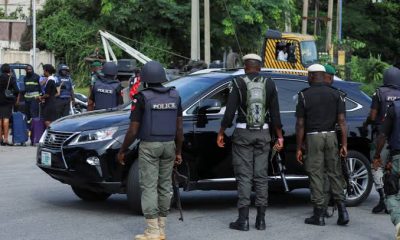Football
The greatest secondary school in the history of Nigerian football – Segun Odegbami
Published
6 years agoon
By
Olu Emmanuel
You don’t have to read this if you are NOT interested in the history of Nigerian football.
Which secondary school has produced the highest number of players for the Green/Super Eagles in Nigeria’s history?
This is a Million-Dollar poser that I have been trying to solve in the past 48 hours. The process has been an experience I must share, and my conclusion, a shocker.
This whole thing started innocently; My Alma Mater is about to celebrate its 60thanniversary. Alumni are planning a massive re-union scheduled for the month of November 2019 in Jos. Part of my mandate is to write a little tribute on St. Murumba College, Jos.
My challenge is that I always look at the world through the lens of sports. St. Murumba College will not be an exception. Looking through my prism, I realize very quickly that I am on to something interesting. I am pleasantly surprised to discover the rich throve of football archived in the school’s history – ‘diamonds’ hidden in the recesses.
I am going through my personal experiences, 5 enriching and memorable years in a small Day-school where it was a requirement for all the students to own their own bicycles. The distance to the school from town was long (3 kilometres) and Jos had no intra-city public transportation of any kind.
Looking back, those years were wrapped in great friendships, a peaceful beautiful city, first class academics and a proper grounding in football. Those years are some of the best and most memorable of my life. I also recall, of course, the sad part, the political upheavals and horrors of 1966, the pogrom, particularly. Images of a particular morning are etched in my mind.
For many years after that morning in January of 1966, I was traumatized by recollections of gruesome killings, burning and looting that happened right before my infant eyes, unfortunate incidences that were to become a precursor to even more senseless orgies that have turned the once beautiful, peaceful and cosmopolitan city of brothers, into fields of death, with the blood of the innocent smeared permanently as scars on the Jos landscape.
I am to write a tribute.
I am recalling football in my years in St. Murumba College. I start to compile a few names that I can recall of students that represented the school. Some of them went on to play in the Green/Super Eagles. It is an interesting reverie. I am feeling proud and excited. How many schools in Nigeria have churned out many players that went on to play for the national team? We should have the statistics, so that we can crown one as king. I start to browse across the history of Nigerian football. I compile names of players and their schools. Despite my claim to being some kind of authority in the documentation of Nigerian football, I realise how shallow my ‘library’ is.
I must consult others in the field very quickly. I don’t have enough time to do a proper forensic of the subject, so, I shall do a quick audit, put down what I find and challenge the rest of the country to challenge my finding. My excitement is growing. I call up some friends immediately. They represent different football areas, eras and interests in the country: Patrick Ekeji, Godwin Dudu-Orumen, Ejike Ikunze, Ikeddy Isiguzo, Sam Pam, Patrick Mancha, Henry Nwosu.
I speak with each one of them about what they know. Their recollections are blunted by the suddenness of my call, my unusual request and by age! Like me, none of them has a ready list of names of players and their schools. None could come up easily with more than 2 or 3 names from any single school in the country since Independence. Naming popular football schools is easy. Attaching more than 2 names of players is more difficult. It takes Henry Nwosu 24 hours to come up with the longest list of players from any one school that I have so far compiled. He gets up to 8 players.
Godwin Dudu-Orumen scans through schools and players in the Mid-Western region axis. No matter how much he tries, he can’t get beyond a maximum of 3 players amongst the popular schools that he reels out easily.
I call up Patrick Ekeji to help me with the East. The man is a Lagos man. He went to St. Gregory’s College. He suggests I contact Ikeddy Isiguzo and Ejike Ikunze, Mr. Football. Between both gentlemen I do not get far at all. The East of yore had too many schools, the competition too high, and the best players thinly spread between them. No school comes up with more than 3 names of students that played for the national team.
I leave the east and go northwards. The north is very easy to traverse very quickly. There are fewer big football loving schools and no long list from any schools. It is only Jos that has big names and records to audit.
It was always a great football City – 11 FA Cup finals in almost as many years! There is something about the city and producing great players. I know a lot of the history because I grew up there and I was involved. One school immediately comes to my mind. It is a little-known school called Academy Institute of Commerce. In 1965, several of the school’s players were Igbos. They were also members of the Jos Town team, Plateau XI. The team had gone to Lagos, as usual, for the final rounds of that year’s FA Cup, and narrowly escaped the political upheavals that erupted throughout Northern Nigeria (including Jos). The Igbo players decided to stay back in Lagos to safeguard their lives, joined Stationary Stores and formed a significant number in the Green Eagles for that period.
That’s how 5 players from a single secondary school in Jos, played for the senior national team in that era. They are Samuel Garba Okoye, Peter Anieke, Tony Igwe, Batande Nakande and Ismaila Mabo. I do not know if Academy Institute of Commercestill exists but it holds the record of producing 5 players in one year playing for Nigeria’s national team.
But that still trails behind Henry Nwosu’s list of 8 players. There were many schools in Lagos and Western Nigeria, but none dominated the national scene the way Academy Institute did. Like in the East, Western Nigeria had too many schools and too many players scattered thinly across them. Not any one of the schools had more than 3 players we can list, not even the greats with a rich history of sports.
So, I am about to give up and crown Henry Nwosu’s school, St. Finbarr’s College, Akoka, Lagos, ‘King’. It stands alone at poll position in the race for the record of the secondary school that has produced the highest number of senior national team players in Nigeria’s history. This is the list: Godwin Odiye, Emilo John, Martin Eyo, Stephen Keshi, Franklyn Howard, Henry Nwosu, Paul Okoku, Nathaniel Ogedengbe.
Trending

 Politics5 days ago
Politics5 days agoPRP conducts ward, LG congresses in Lagos, elects new executives

 News6 days ago
News6 days agoHeart of Gold Empowerment Outreach bolsters 30 indigent’s economic status in Edo State

 Latest1 week ago
Latest1 week agoSEARP decries delay in enforcing judgment on N6tn NDDC misappropriation scandal, threatens suit against AGF Fagbemi

 Business1 week ago
Business1 week agoFG to lose N1.4trn annually as corporate tax cut takes effect in 2026

 Business4 days ago
Business4 days agoControversy trails Dangote Refinery as stakeholders Allege systemic pushback against local investment

 Business6 days ago
Business6 days agoNDIC begins liquidation of ASO Savings, Union Homes, moves to pay insured deposits

 Crime1 week ago
Crime1 week agoPolice To Resume Tinted Glass Enforcement

 Latest7 days ago
Latest7 days agoAkpabio denies health scare, dismisses reports of collapse on London trip

